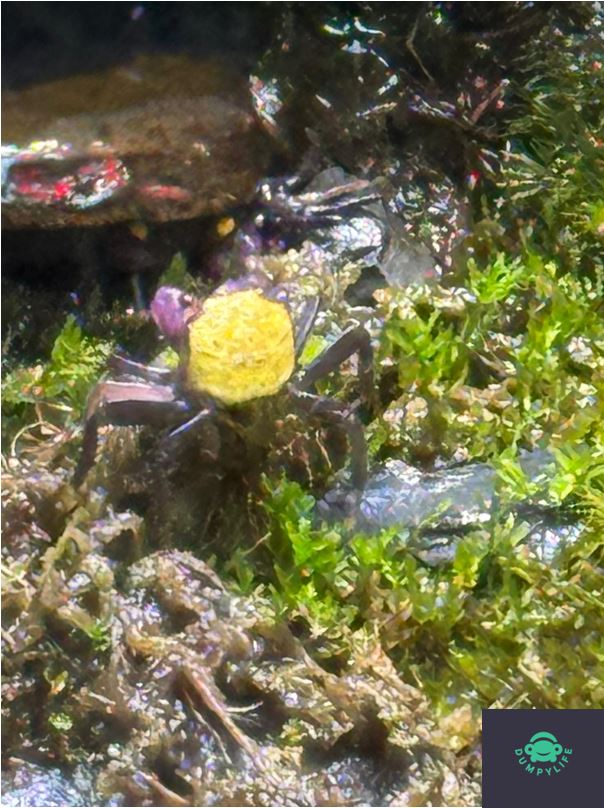Your cart is currently empty!
Vampire crabs (Geosesarma sp); an information guide

The Latin name for the vampire crab is Geosesarma dennerle. Little scientific research has been done on the vampire crab. It can therefore sometimes be difficult to figure out how to best care for them. They have only been on the market since around 2006 and have grown rapidly in popularity since then. Enough reason to study this sweet animal more closely and share our findings with the world.
Unlike most types of crabs, the vampire crab is not a freshwater crab. They are semi-terrestrial animals. They therefore live a lot on land. They do need water, especially during moulting. The crab’s shell can grow up to 2.5 cm and with legs about 5 cm. The males are often slightly larger than the females and have larger claws. In addition, the underside of the shell is often elongated or pointed in males and more round or oval in females. They are social animals and easy to care for. They have a life expectancy of about 2 years. They do not get along well with other types of crabs. Also within their species, it is better to put the same color type together to prevent quarrels.
Vampire crabs are available in many different, beautiful colours. Purple with yellow, bright red or bright orange. But also rainbow variants and Halloween colours. We ourselves have chosen the purple with yellow vampire crabs.
In the blog Our vampire crabs we show how we have placed them.
In terms of housing, a vampire crab needs more land than water. A freshwater aquarium is therefore not suitable. It is better to choose a paludarium. Vampire crabs cannot stay under water for long, so shallow water or sufficient exits to the surface must be provided. To prevent territorial fights, it is important to provide sufficient hiding places. They need about 10 litres of content per crab. The paludarium must be able to be closed well, because they escape quickly. The temperature must be around 24 and 28 degrees Celsius with a humidity of approximately 75%. The water must be well filtered or changed regularly. The vampire crab moults about once a month when it is an adult. In the first half year of their life this will be much more. It is then important that they have enough clean water. They are also very vulnerable afterwards and there should be enough hiding places.
In the blog Building a Paludarium for vampire crabs we tell you how we tackled it. Or watch the video below.
In the wild they mainly eat small insects (alive and dead), worms and vegetable waste. They are therefore omnivores. In captivity they are especially happy with bits of worm, small brine shrimp, red mosquito larvae. But fish flakes, vegetables and dry leaves are also sufficient. It is important that they get enough calcium. This will be discussed in more detail in the blog Nutrition of vampire crabs.
A female carries her eggs for about 15 weeks and usually chooses to lay them in the water. These are usually about 30 eggs, but this varies greatly. The female’s pelvic shield will then open up a bit more. Reproduction remains a bit mysterious in the literature. For that reason we have decided to document our situation..
